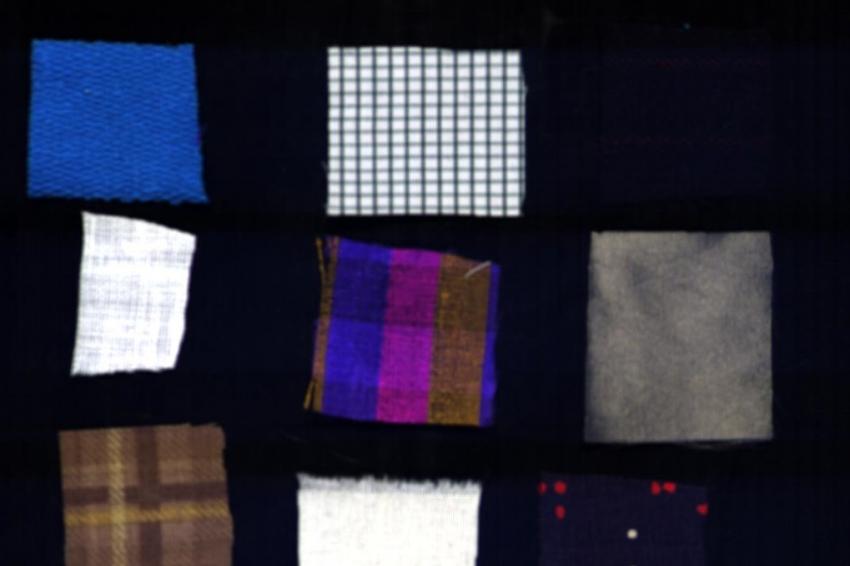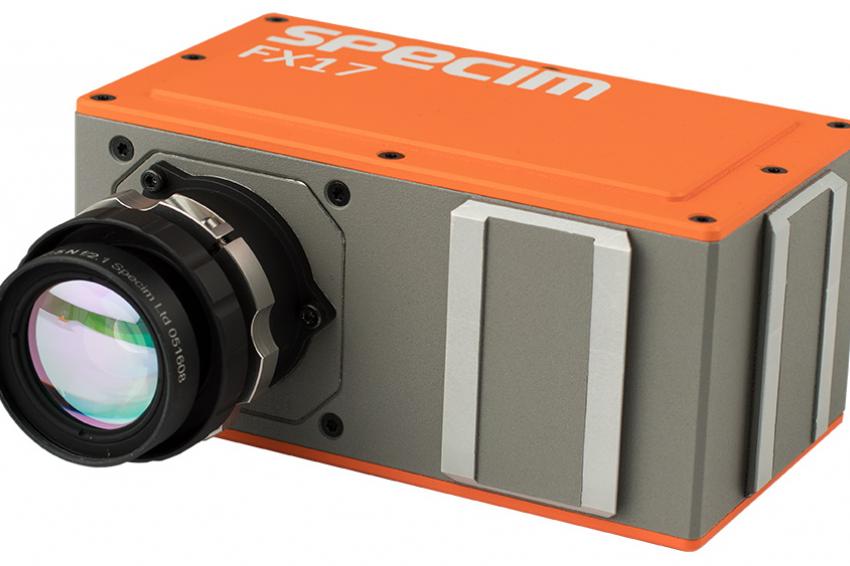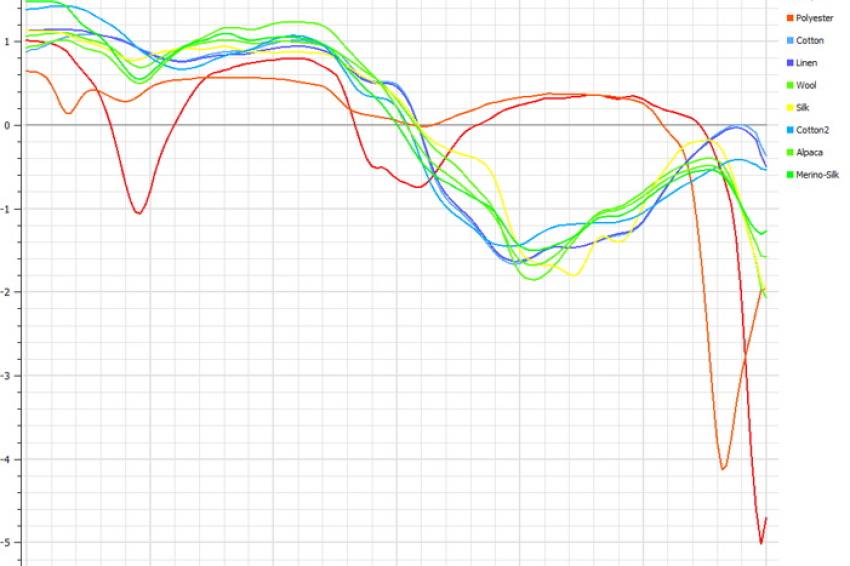Reduce Waste with Hyperspectral Imaging
An InGaAs-based spectral camera is the core component of a textile sorting solution
New EU guidelines for the recycling of fabrics and textiles have been in force since 2018. The aim of this very important project for the environment is to reuse all textiles worldwide from 2025. A hyperspectral imaging solution from the Finnish company Specim offers the technical requirements for successfully achieving this ambitious goal.
The textile industry causes a significant part of the pollution from which mankind is increasingly suffering worldwide. The reasons for this are diverse. On the one hand, the production of fabrics and clothing requires a high level of resources, especially e.g. with cotton an immense water consumption. On the other hand, a large part of used and new textiles - current estimates are around 16 million tons per year – ends up in landfills, although at least a partial reuse of the materials would be possible. In addition, microplastics as the residues from synthetic textile fibers are increasingly reaching soil and water, where they endanger the existence of entire animal species and mankind through the food chains. The trend towards replacing clothing with new ones more and more frequently is partly responsible for this negative development. Companies in the fashion industry are presenting more and more collections each year. Where one new summer and winter collection used to be on the market in the past, up to 25 new launches per year are no longer uncommon.
In order to reduce the serious consequences of these developments for the environment, it is necessary to significantly increase the rate of textile recycling. This cannot be achieved with the current manual methods, since employees cannot sort different substances with the required speed and endurance and, in addition, special knowledge of the different types of textile is required: reliable identification and separation of different types of fibers and substances with blended fabrics based solely on appearance is almost impossible by hand. To make things worse, such workplaces are generally very unsanitary and even potentially dangerous due to possible toxins in the textiles to be sorted. In the long term, manual sorting of textiles is therefore extremely expensive.
New EU Guidelines against Textile Waste
The European Union adopted new guidelines for combating textile waste in 2018 and set a deadline for its member states: by 2025, they should completely recycle all textiles. According to the current state of the art, this ambitious goal can only be achieved with a few methods. Hyperspectral imaging is one of these technologies, Esko Herrala knows. The co-founder and senior application specialist of the Finnish company Specim has been dealing with the question of how to separate and recycle different materials economically and safely for many years. He has contributed to this topic in a report by the “Committee for the Future” written for the Finnish parliament. The aim of this report was to find out how Finland can benefit from the vision industry and in which fields of application this technology can be used.
"I was responsible for the circular economy part of that report where I demonstrated various possible uses of photonics systems in the area of waste separation," says Herrala. During a presentation of the results at the Helsinki Parliament in 2019, the Finnish government then defined the sorting of textiles as a prioritized area of application and has set the goal of collecting and recycling all of the country's textile waste by 2023. "Finland is already one of the world's leading countries in the field of plastics and construction waste sorting and would also like to use the great economic potential of textile recycling with innovative solutions," Herrala explains.
Hyperspectral NIR Systems as a Solution
From the end of 2019, Specim dealt intensively with the task and looked for suitable partners. For the manufacturer of NIR hyperspectral cameras, it was obvious that this technology was to be considered as a possible solution for textile sorting. “First of all, you have to know that different textiles have individual spectral characteristics that can be used to classify the fabrics. Fabrics either consist of natural fibers such as Cotton, of animal fibers such as Sheep's wool or of synthetic fibers such as polyester. Mixed fabrics are also often made from different types of fibers,” explains Herrala. “The different materials differ in their chemical and molecular structures. As a result, these substances react differently to electromagnetic waves of different wavelengths in the way they absorb, reflect or let them pass through."
These characteristics can be used to perform a spectral analysis of textiles based on the reflected light using hyperspectral imaging systems. Special cameras with wavelengths in the near infrared range (NIR) in combination with a spectrograph enable a clear identification of the chemical composition of the inspected material and thus form the basis for an automated sorting of textiles.
"Hyperspectral NIR image processing systems in combination with suitable classification algorithms allow the differentiation of substances with different fabrics and colors as well as the identification of natural, animal and synthetic fibers," explains Herrala. "This technology can even deliver quantitative information about the proportions of synthetic and natural fibers in blended fabrics."
Specific Requirements
The development of a reliable solution for sorting textiles presented us with specific requirements, recalls Herrala: “When sorting plastics, there is the phenomenon that black materials largely absorb the light, making it much more difficult to distinguish between different types of black plastics. This problem also occurs with black fabrics. We were able to solve it by using other cameras with wavelengths in the mid-infrared range (MWIR, Mid Wave Infrared), but due to the higher cost for such cameras, the required cost-effectiveness has to be checked for the individual use case."
Another difficulty is the differentiation of different substances when they are damp or wet. “We used both dry and wet material to train the system and then tested the classification algorithm with dry and damp textiles. This path led to usable results, but we still prefer to sort only relatively dry material.”
According to Herrala, the sorting of so-called multilayer textiles is still unsolved - the technology is currently reaching its limits at that point.
The solution: Specim FX17
The InGaAs-based spectral camera FX17 is the ideal solution for a suitable sensor for classifying textiles. This camera works in the wavelength range from 900 to 1700 nm and, apart from a few synthetic black textiles such as black polyester or black nylon, completely covers the different spectral signatures of conventional fabrics.
Due to a special technical feature, the FX17 camera is also very flexible with regard to the recording speed: It offers users the option of selecting and evaluating from 224 wavelength bands and only use those that are particularly meaningful for the application at hand due to the material properties of the test object. The number of wavelengths used has a direct influence on the speed of the solution: the fewer wavelengths used, the faster the evaluation. This property is called Multi Region of Interest (MROI) and means with the FX17 that a recording speed of 670 lines per second can be achieved when using all 224 wavelength bands, however, with a reduction of wavelength bands, even thousands of lines per second are possible.
Another feature of the camera increases the reliability in the detection of different types of fabric by adjusting the camera configuration in terms of its spatial binning and to work with different resolutions, thus enabling statistical averaging of the measurement results in the camera, as Herrala explains: “Especially with textile detection, problems often occur with reflections or shadows, which can be caused by buttons, rivets or dirt when textiles are transported and differentiated on conveyor belts. If you do not use the results of individual measurement values for classification, but instead use the statistical average over the area examined, you will much more likely get the correct results. The FX17 offers this possibility."
Thanks to other special features of the cameras, such as the excellent signal-to-noise ratio of 1000: 1 and high throughput, which leads to less light required to illuminate the test area, or higher sorting speeds, this camera has proven to be an excellent sensor for use in textile sorting.
Automated Textile Recycling
An automated solution to the task requires more than just a suitable sensor, but also a company that wants to bring the technology to market maturity. With the business development company Prizztech Ltd., Specim found such a partner. Prizztech is a non-profit organization, that coordinates Robocoast Digital Innovation HUB, the center of excellence for example in robotics, artificial intelligence, cybersecurity, IoT and circular economy in western Finland.
"One of our goals is to improve the competitiveness in our region, but on the other hand to spread the resulting innovative ideas and solutions internationally," explains Essi Vanha-Viitakoski. She works as an advisor for Prizztech and first met Esko Herrala in the Committee for the Future. “The hyperspectral camera immediately convinced me of its many different uses. On the basis of our first conversation, we then carried out joint application tests for tasks in the food industry. After that, I was completely convinced of Specim´s professionalism and we decided to join forces to push the development of automated systems for textile recycling."
Before this collaboration, neither Prizztech nor the Robocoast Digital Innovation Hub had dealt with the sorting of textile waste. They therefore commissioned a study on this subject, which was funded by the European Regional Development Fund (ERDF). The results mentioned therein confirmed the enormous potential, said Vanha-Viitakoskis: “A key statement of the study was that there are no ready-to-use solutions for sorting textiles worldwide, but the urgency to solve this task economically with the help of reliable automation will continue to increase in the future."
These results were a further motivation for the project partners to drive the development of suitable technologies. With success, reports Esko Herrala: “The work has not yet been completed, but we do already know most of the possible sorting problems and what leads to success, both technically and economically. A large part of all textiles can be sorted automatically with the help of hyperspectral imaging and a suitable classification algorithm."
"The Specim hyperspectral cameras in combination with the existing software and application know-how of everyone involved create new opportunities in the field of textile sorting and in general for the recycling industry to reduce environmental pollution", confirms Essi Vanha-Viitakoski. "We are very proud that a technical solution to the global problem of textile recycling has been found in Finland."
Contact
SPECIM, Spectral Imaging Ltd.
Elektroniikkatie 13
90590 Oulu
Finland
+358 10 4244 400
+358 10 4244 401












